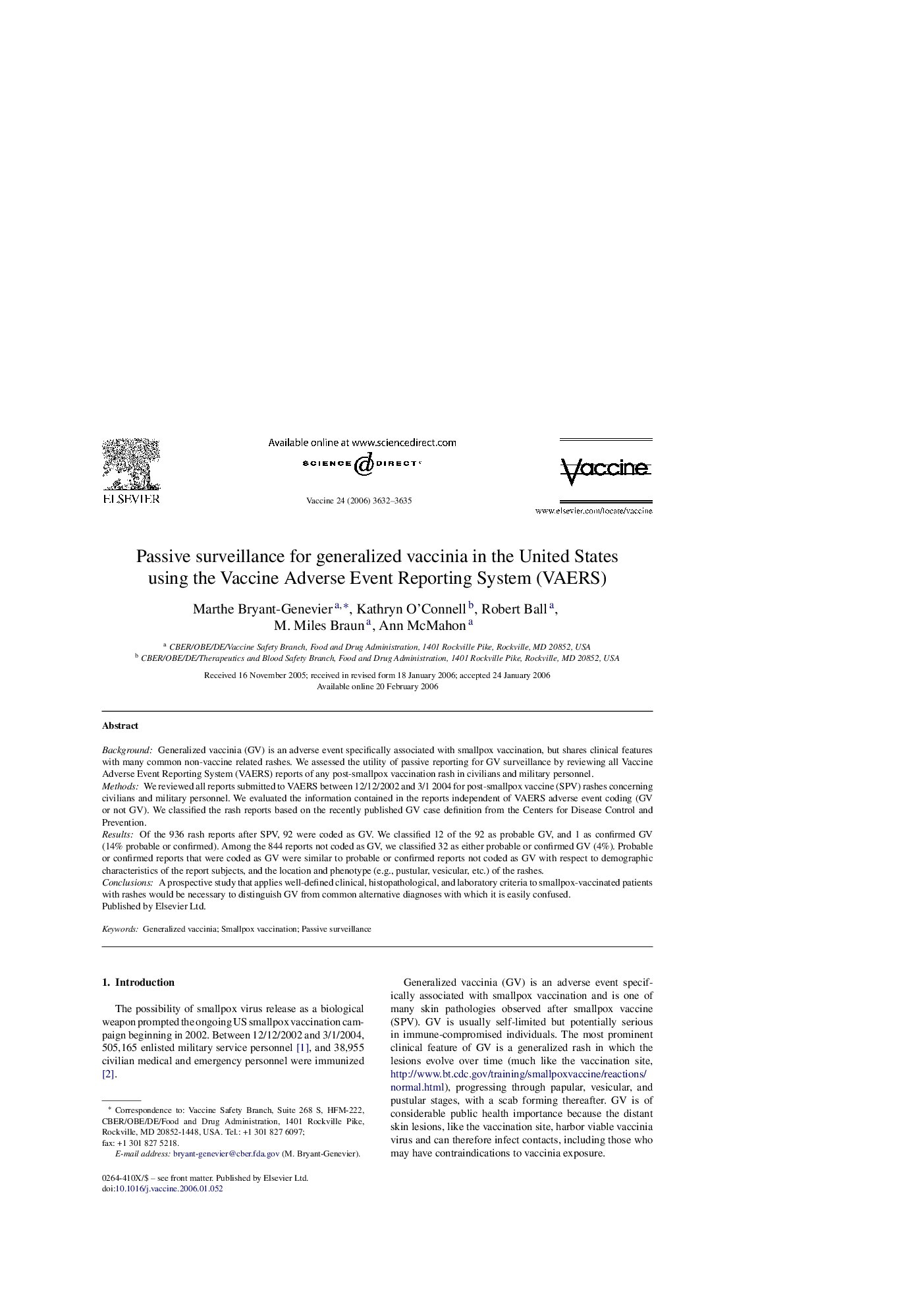| Article ID | Journal | Published Year | Pages | File Type |
|---|---|---|---|---|
| 2409483 | Vaccine | 2006 | 4 Pages |
BackgroundGeneralized vaccinia (GV) is an adverse event specifically associated with smallpox vaccination, but shares clinical features with many common non-vaccine related rashes. We assessed the utility of passive reporting for GV surveillance by reviewing all Vaccine Adverse Event Reporting System (VAERS) reports of any post-smallpox vaccination rash in civilians and military personnel.MethodsWe reviewed all reports submitted to VAERS between 12/12/2002 and 3/1 2004 for post-smallpox vaccine (SPV) rashes concerning civilians and military personnel. We evaluated the information contained in the reports independent of VAERS adverse event coding (GV or not GV). We classified the rash reports based on the recently published GV case definition from the Centers for Disease Control and Prevention.ResultsOf the 936 rash reports after SPV, 92 were coded as GV. We classified 12 of the 92 as probable GV, and 1 as confirmed GV (14% probable or confirmed). Among the 844 reports not coded as GV, we classified 32 as either probable or confirmed GV (4%). Probable or confirmed reports that were coded as GV were similar to probable or confirmed reports not coded as GV with respect to demographic characteristics of the report subjects, and the location and phenotype (e.g., pustular, vesicular, etc.) of the rashes.ConclusionsA prospective study that applies well-defined clinical, histopathological, and laboratory criteria to smallpox-vaccinated patients with rashes would be necessary to distinguish GV from common alternative diagnoses with which it is easily confused.
